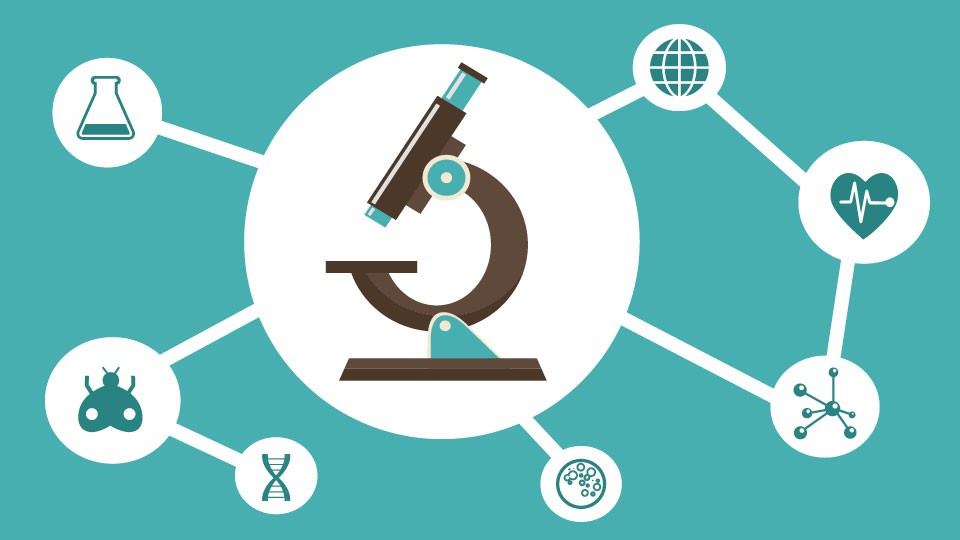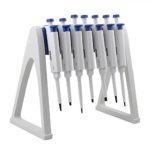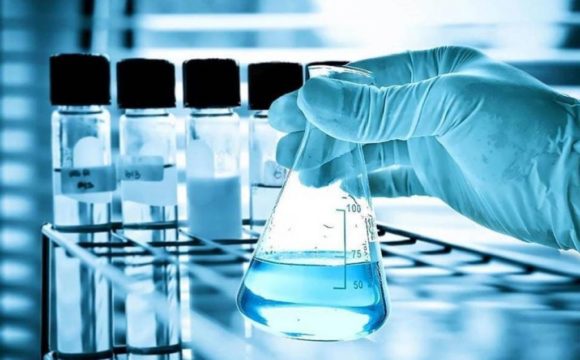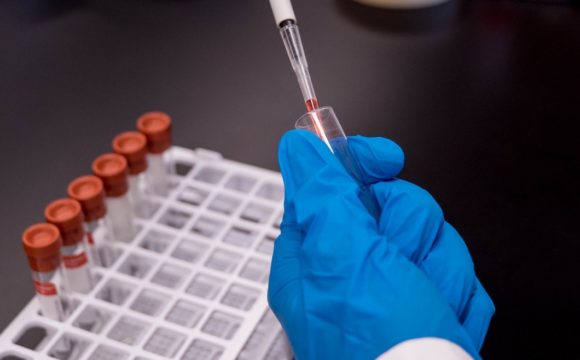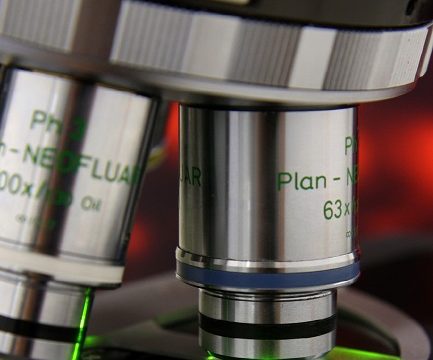Without the ability to explore and zoom inside the living world, the progress of discoveries and inventions would be crippled. There are many types of microscopes used in investigating and exploring life science. Depending on the purpose, magnification, sample type, and application, a suitable microscope should be selected. Some of the frequently used microscopes are listed below.
Simple microscope
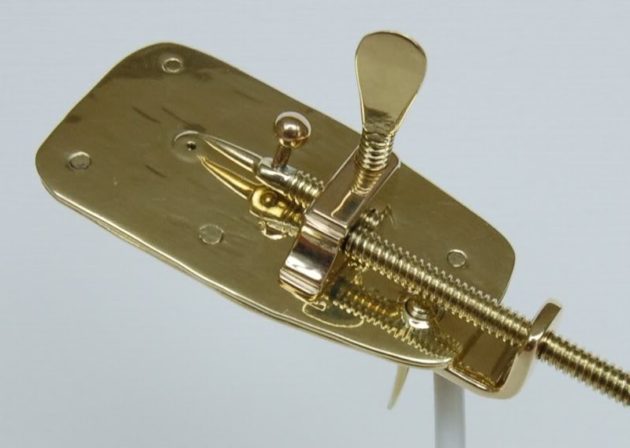
It is considered as the first microscope ever invented. It was created by Leeuwenhoek in the 17th century. He combined a convex lens with a holder. It magnified the specimen 200 to 300 times (more like a magnifying glass). The microscope was pretty simple but was powerful because it was able to give information about the biological specimen.
A simple microscope is used by watchmakers to magnify and see the small parts of the watch. It is also used by jewellers, palmists, skin specialists. It is used to enlarge the image of letters of a book, texture of fibres, threads of cloth and details of stamp and engravings. Nowadays, simple microscopes are not used much because of the introduction of other microscopes that have a second lens in them, thus increasing the image quality.
Compound Microscope
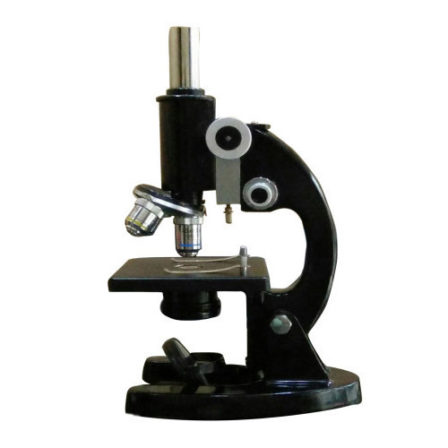
In a compound microscope, the slide is illuminated with the help of a light bulb which is placed underneath. The specimen is magnified by 2 lenses placed one near the slide known as an objective lens and one near the top is known as an eyepiece. They give a two-dimensional image which can be adjusted depending on the strength of the lenses.
The design of the compound microscope varies but is usually pretty standard, which makes it easy for anyone to use them. Advantages of compound microscopes are that they are affordable for students, amateurs as well as scientists and can go up to a higher magnification. A major disadvantage is that they have a lower resolution, because of which the image is never sharp as in case of the more advanced type of microscopes.
Fluorescence Microscope
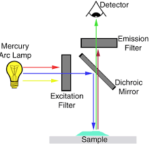
George G. Stokes, a British scientist described fluorescence in 1852 for the very first time. He coined the term fluorescence when he observed that red light is being emitted by mineral fluorspar when it was illuminated by ultraviolet excitation. He noted that the wavelength of the fluorescence emission is longer than that of the excitation light. A fluorescence microscope is a special tool because it observes the fluorescence emitted by the target molecule. It does so due to adding of specific fluorescent reagent to the target cells due to which they emit fluorescence when the excitation light is applied to them.
Substances like chlorophylls, vitamin A, collagen, riboflavin can be seen under this microscope without using the fluorochromes because they have the property of auto-fluorescence. Other substances like cellulose, glycogen, protein, starch and Y chromosomes are required to be stained by fluorochromes. We can see a particular protein in the cells by using fluorescent dyes.
Confocal Microscope
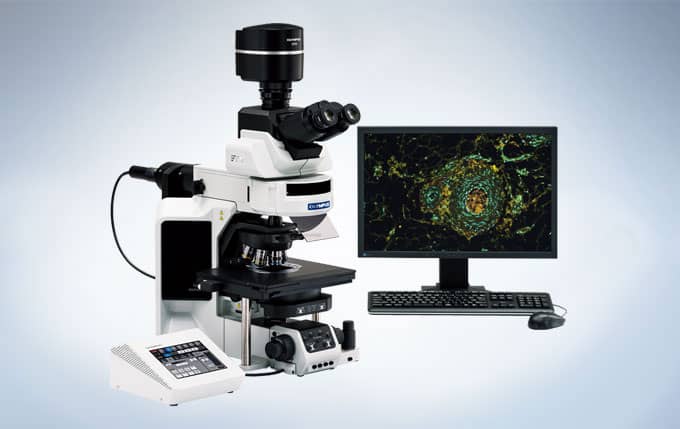
In a confocal microscope, visible light comes from a laser source which makes it different from a stereo and compound microscope. There are a series of scanning mirrors for the laser to scan the sample, and then the image is assembled in a computer to display it on the screen.No eyepieces are present in this microscope. They give a 2-dimensional image which can be adjusted depending on the strength of the lenses.
As compared to the fluorescence microscope, this microscope uses point illumination and a pinhole in an optically conjugate plane in front of the detector to eliminate out-of-focus signal – hence the name “confocal”. As only light produced by fluorescence very close to the focal plane can be detected, the image’s optical resolution is much better than that of wide-field microscopes. However, as much of the light from sample fluorescence is blocked at the pinhole, this increased resolution is at the cost of decreased signal intensity and long exposures are required.
Scanning Probe Microscope
Scanning probe microscope is used for studying surfaces at nanoscale level. The image forms by using a probe. The probe scans the surface of the sample and collects data by touching it. The collected data is displayed as a computer image.
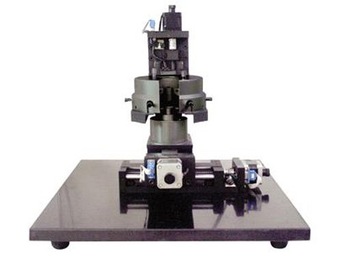
Scanning tunneling microscope (STM) was the first Scanning Probe Microscope. It was the first approach to technology having atomic resolution capability. The STM uses electrical current as the scanning tip, which acts as a limitation because only conductive or semi-conductive materials can be studied under this microscope. Due to the evolution of SPMs, scientists and engineers are able to see structure and detail with an unprecedented resolution without the need for rigorous sample preparation. The development of sophisticated techniques and technical advances have greatly extended the abilities of SPMs. These microscopes scan in normal air rather than vacuum which is the case with electron microscope.
Electron microscope
In electron microscope, electron beam instead of light is used for illuminating the objects and thus magnifies to angstrom scale. There are many variations of electron microscope such as scanning (SEM), transmission (TEM) and scanning transmission (STEM).
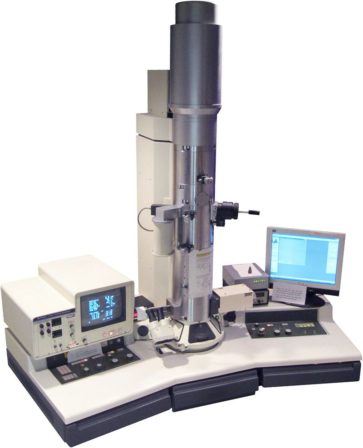
The sample preparation is also intense in electron microscope and the image quality depends heavily on that. Steps like dehydration, cryofixation, embedding, staining, conductive coating etc. may be needed in combination depending on the sample attributes. This microscope can be used for applications such as cryobiology, protein localization, electron tomography, cellular tomography, cryo-electron microscopy, toxicology, biological production, and viral load monitoring, particle analysis, pharmaceutical QC, 3D tissue imaging and virology etc.
Digital Microscope
It was invented in Japan in 1986. It uses a computer to view objects that are not visible with naked eyes. They exist in both ways i.e. with or without eyepieces. Via USB cable it can be connected with a computer monitor. It gets displayed as a magnified specimen on the computer screen with the help of computer software. Moving Images can be recorded and still ones can be saved in the computer’s memory. The saved images can be e-mailed and kept for a longer period of time. It can be used by researchers, students, hobbyists, and manufacturers.
Stereo Microscope
A stereo microscope is different from the compound microscope, the major difference being that it has two eyepieces instead of one. Stereo microscope produces a three-dimensional image, here the two eyepieces send a different image to both the right and left eye. The specimen is usually lit from above, rather than underneath, which makes the stereo microscope ideal for dissection, manufacturing, inspection, circuit board work or use with any opaque specimen. They are inexpensive which makes it ideal for professionals, amateurs and other people in this industry. It has low magnification due to which individual cells cannot be seen.
Pocket Microscope
It is tiny but with impressive abilities. It is durable and portable which makes it easy for use by scientists or students. It is used for handheld imaging for a variety of objects in the field outside or in the laboratory. It has a magnification ranging from 25x to 100x. They use batteries and LED light.
References
- https://sciencing.com/different-kinds-microscopes-uses-5024481.html
- https://www.cas.miamioh.edu/mbiws/microscopes/types.html
- https://www.microscope-detective.com/types-of-microscopes.html
- https://www.microscopemaster.com/different-types-of-microscopes.html
- https://study.com/academy/lesson/what-is-an-electron-microscope-definition-types-uses.html
- https://www.news-medical.net/life-sciences/Types-of-Electron-Microscopes.aspx



